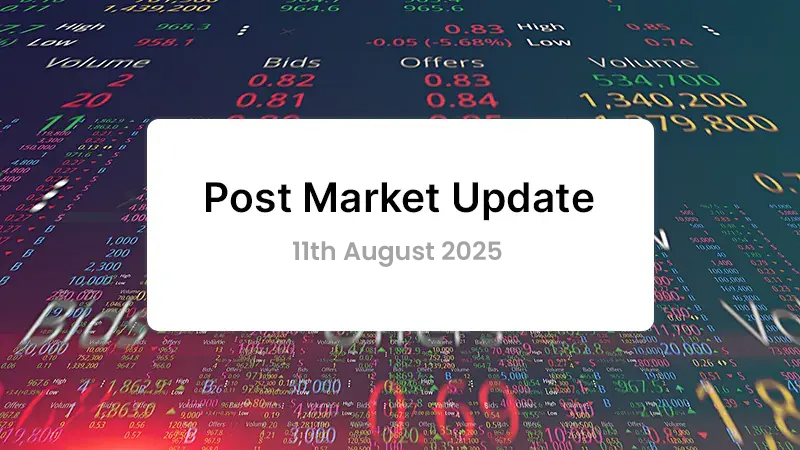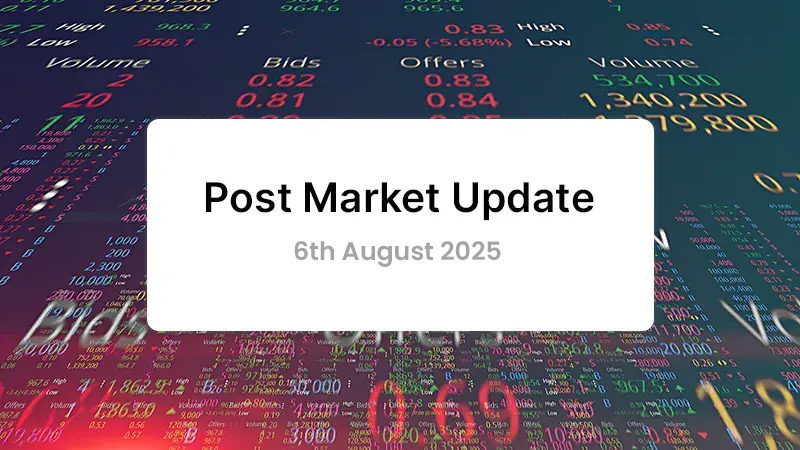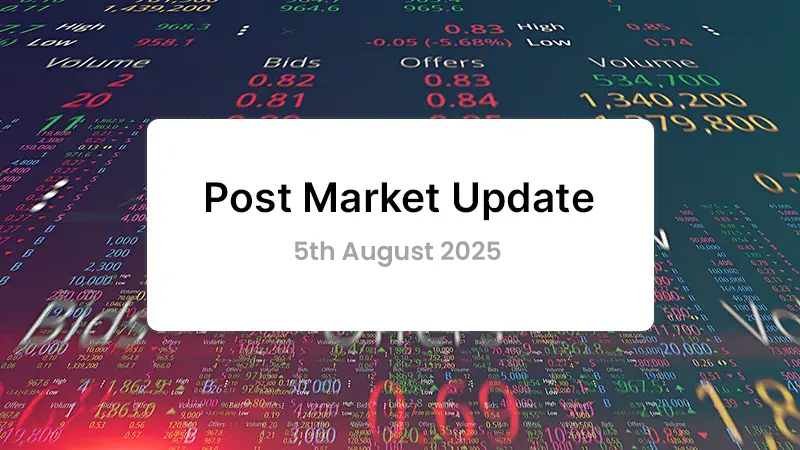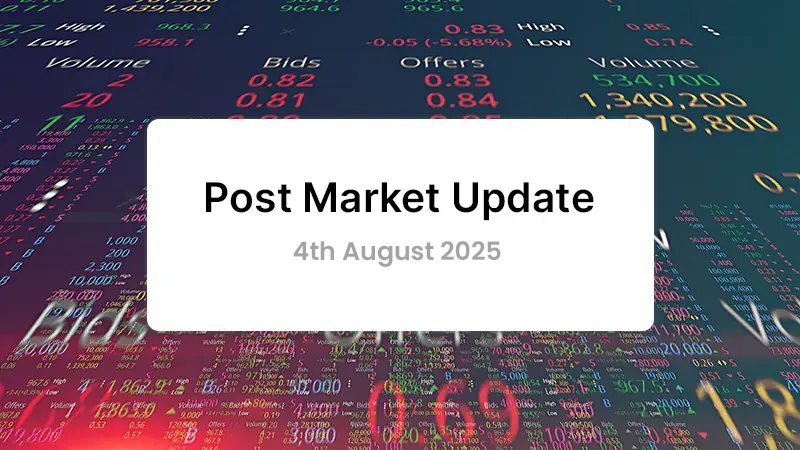
The Indian equity market has demonstrated remarkable resilience in June 2025, shrugging off what could have been a major global disruption — the direct confrontation between Iran and Israel. When hostilities peaked on Friday the 13th of June with Iran threatening to shut down the crucial Strait of Hormuz, investors braced for the worst. After all, a fifth of the world’s crude oil passes through this narrow waterway, and for India, the dependence is even starker — nearly 40% of imported crude enters through this route.
Yet, contrary to expectations, Indian equity benchmarks staged a sharp rebound. The Nifty 50 and Sensex not only recovered their initial losses but have since climbed to within touching distance of their all-time highs. As of June 27, the Nifty had gained over 4.4% from its June 13 low, trading around 25,549, while the Sensex hovered near 83,755, just 2.6% below its peak.
Why the Strait of Hormuz Didn’t Break the Market
At the heart of investor panic was Iran’s threat to close the Strait of Hormuz — a move that would have sent global oil prices spiraling and severely impacted economies like India’s, which relies on imports for about 85% of its crude requirements. But that threat, while significant, failed to materialize. Analysts were quick to note that Iran’s own economy is heavily reliant on oil exports through the same route. Shutting down the strait would mean choking its own revenue pipeline.
This realization brought immediate relief to the global energy market. After a brief spike to nearly $80 per barrel, Brent crude prices cooled off to around $73–$74. This easing in crude prices was a crucial tailwind for Indian equities. Energy prices have a cascading impact on inflation, trade deficits, and currency stability — so the drop in oil helped soothe multiple macroeconomic concerns in one shot.
India’s Strategic Playbook Softens the Blow
India’s ability to weather the crisis was also supported by its proactive efforts in energy security. In recent years, India has diversified its oil import sources, with nearly 40% of imports now coming from the U.S. and Russia — bypassing the Hormuz Strait entirely. Additionally, India has been working on activating the Chabahar port as an alternative route, and though not yet fully operational, the strategic intent has boosted confidence.
In the short term, India has also explored using pipelines through Saudi Arabia and Abu Dhabi to bypass maritime risks. These developments offer both actual and psychological support to the markets — indicating that India is not as vulnerable as it once was to chokepoint disruptions.
Macro Stability Helps Anchor Investor Confidence
On the macroeconomic front, India enters this volatile period with relatively strong fundamentals. Retail inflation remains contained, helped by subdued fuel prices. Even if crude were to inch up to $85–90 per barrel, analysts believe petrol and diesel prices at the pump may not rise significantly due to the government’s current pricing buffer and excise mechanisms.
While rising oil prices could widen India’s trade and current account deficits, the country’s healthy foreign exchange reserves and recent improvements in macro indicators offer a cushion. The Indian rupee, which momentarily weakened, also stabilized quickly, aided by falling oil prices and a softening U.S. dollar.
The Curious Case of FII Behaviour
Foreign Institutional Investors (FIIs), often the first to exit at the hint of global risk, did pull out funds in the immediate aftermath of June 13. But with crude correcting and broader global sentiment improving, they resumed buying within days. However, the most recent bout of FII selling appears less related to geopolitical risk and more reflective of shifting regional preferences — particularly a return of interest in Chinese equities and U.S. tech stocks.
Interestingly, global indicators like the Nasdaq Composite and the Hang Seng Index have rallied in the same period, while gold and the dollar corrected, suggesting a broader risk-on sentiment. This implies that the FII exodus from Indian equities may be temporary and driven more by tactical asset allocation than fundamental concerns.
Domestic Flows and Earnings Optimism Hold the Fort
Even if foreign money remains fickle, domestic institutional investors (DIIs) have stepped in to support the markets. While mutual fund inflows have slowed to 14-month lows, the upcoming Q1 FY26 earnings season could provide the next catalyst. If results are strong, DIIs could continue to provide stability and even drive the next leg of the rally.
Additionally, investors have rotated into large-cap and defensive stocks, a strategy often seen during uncertain times. These segments have benefitted from stable cash flows and greater investor confidence, lending further strength to the indices.
Outlook: Volatility Is Not the End of the Story
Looking ahead, the ceasefire between Iran and Israel remains fragile, and further violations could reignite volatility. Yet, the structural picture for India remains intact. Strategic energy diversification, macroeconomic resilience, and a strong domestic investor base make India better equipped to handle external shocks than in the past.
Investors would do well to stay cautious in the short term but not overly pessimistic. Significant dips driven by geopolitical noise may offer attractive entry points into high-quality businesses. As long as Brent crude stays below $85–90 and the rupee holds steady, inflation should remain manageable, and the equity markets can continue their upward trajectory.
In essence, while war clouds may still linger over the Middle East, Indian markets are choosing to look beyond the fog — focusing instead on earnings, domestic demand, and structural strength.
Market this week
| 23th June 2025 (Open) | 27th June 2025 (Close) | %Change | |
| Nifty 50 | ₹ 24,940 | ₹ 25,638 | 2.8% |
| Sensex | ₹ 81,704 | ₹ 84,059 | 2.9% |
Source: BSE and NSE
- Indian equity indices extended their gains for the second straight week, supported by easing geopolitical tensions in the Middle East and a sharp correction in crude oil prices.
- The market sentiment was further buoyed by sustained foreign inflows, a favourable monsoon outlook, and easing global trade concerns ahead of key deadlines.
- Sectorally, the Nifty Media index led the gains with a 4.3% rise, followed by Nifty Metal (+3.9%), Oil & Gas (+3.2%), and PSU Bank (+2.5%).
- On the flip side, Nifty Realty declined by 1.9%, while the Nifty IT index ended marginally lower, down 0.4%.
- Foreign Institutional Investors (FIIs) continued their buying streak, investing ₹4,423 crore during the week.
- Domestic Institutional Investors (DIIs) also remained net buyers for the 10th consecutive week, pumping in ₹12,390 crore into Indian equities.
Weekly Leaderboard
| NSE Top Gainers | NSE Top Losers | ||||
| Stock | Change (%) | Stock | Change (%) | ||
| Jio Financial | ▲ | 9.9% | ONGC | ▼ | -3.6% |
| Adani Ent | ▲ | 8.1% | Dr Reddy’s | ▼ | -1.8% |
| Hindalco Inds | ▲ | 7.4% | Tech Mahindra | ▼ | -1.3% |
| Adani Ports & SEZ | ▲ | 6.7% | Maruti Suzuki | ▼ | -1.2% |
| Ultratech Cement | ▲ | 6.6% | HCL Tech | ▼ | -1.0% |
Source: BSE
Stocks that made the news this week:
IT Stocks Gain on Fed Rate Cut Hopes:
The Nifty IT index closed higher on June 27, tracking gains in US tech stocks as easing geopolitical tensions and renewed hopes of a US Fed rate cut lifted sentiment. The Nasdaq 100 recorded its first all-time high since February earlier this week. Market optimism was further supported by speculation around US President Donald Trump’s intent to replace Federal Reserve Chair Jerome Powell with a more dovish candidate, following Powell’s concerns about inflation risks from upcoming tariffs.
Jio Financial Services Rallies on SEBI Approval:
Shares of Jio Financial Services surged over 4% after SEBI granted approval for its joint venture, Jio BlackRock Broking Private Limited (JBBPL), to operate as a stockbroker and clearing member. This marks the fourth straight session of gains for the stock, which has advanced over 10% in the past week. The JV between Jio Financial and BlackRock, announced in July 2023, aims to tap into India’s asset management industry through a digital-first approach.
IndusInd Bank Rises on CEO Buzz:
IndusInd Bank shares jumped nearly 4% on reports suggesting that Axis Bank’s Rajiv Anand is a leading contender for the bank’s CEO role. Other potential candidates include HDFC Bank’s Rahul Shukla and Bajaj Finance’s Anup Saha. The new appointment would follow the resignation of former CEO Sumant Kathpalia, who stepped down in April amid concerns over the bank’s derivatives portfolio.














